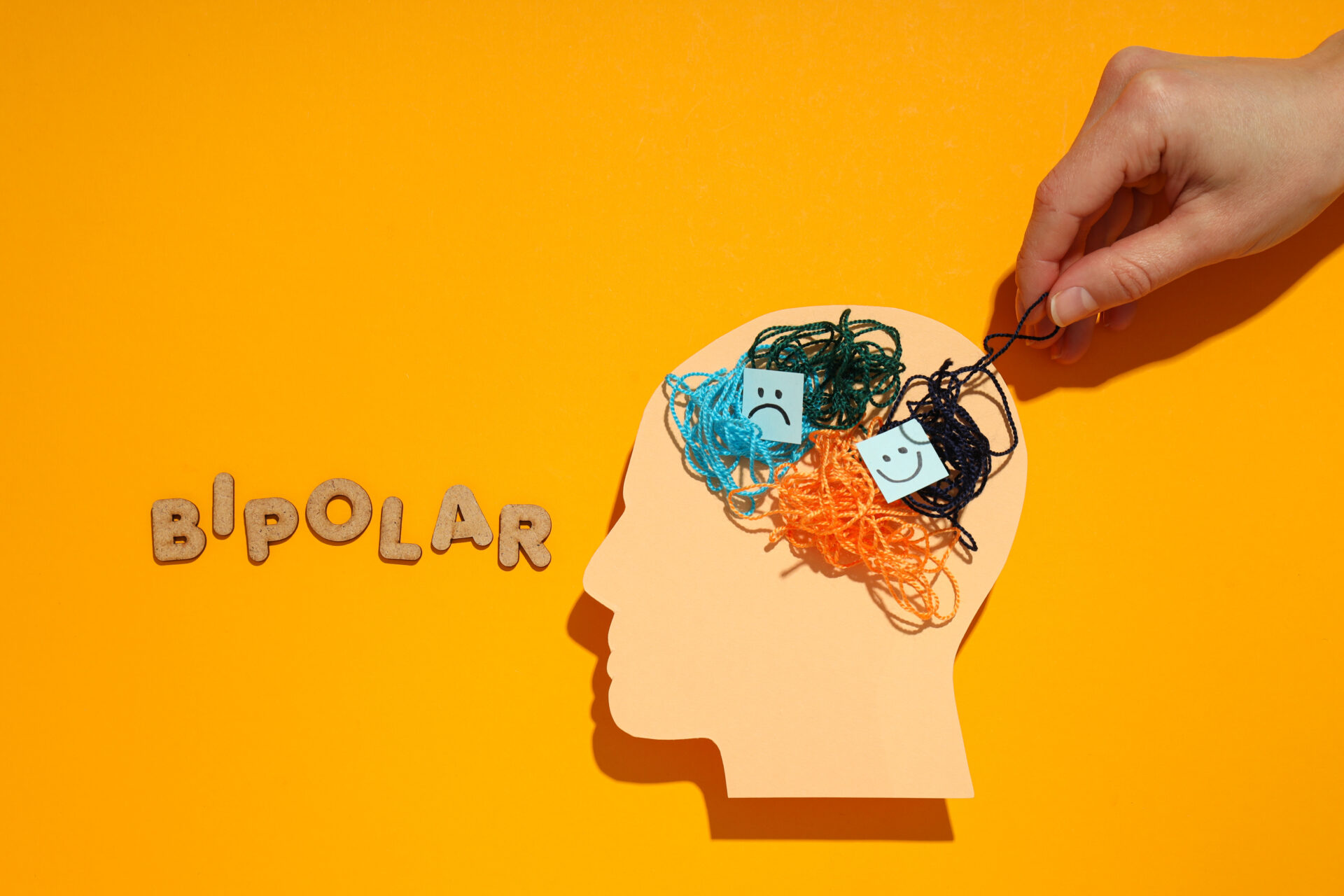Bipolar II Disorder

Bipolar II disorder is a mental health condition that causes a person’s mood, energy, and ability to function to change. It is characterized by periods of depressive episodes alternating with hypomanic episodes. Bipolar II is a subtype of bipolar disorder, which is a mood disorder that causes extreme shifts in mood, energy, and activity levels. Bipolar II disorder is distinct from bipolar I disorder, primarily in the severity of the manic episodes experienced.
Bipolar II symptoms can last a lifetime, but you can manage with the right support and treatment modalities.
What is Bipolar II?
Bipolar II disorder is a mental health condition characterized by recurrent episodes of depression and hypomania. It is a subtype of bipolar disorder, which causes extreme shifts in mood, energy, and activity levels. In bipolar II disorder, the individual experiences depressive episodes, which are periods of intense sadness, hopelessness, and loss of interest or pleasure in activities, alternating with hypomanic episodes, which are characterized by increased energy, euphoria, and impulsivity.
Hypomanic episodes are less severe than manic episodes, such as those seen in bipolar I. Unlike manic episodes, hypomanic episodes do not cause significant impairment in social or occupational functioning, and they are not typically associated with psychotic symptoms. People with bipolar II disorder often experience more depressive episodes than hypomanic episodes, and the condition can have a significant impact on their daily lives and relationships.
Symptoms of Bipolar II Disorder
Just like depression and anxiety can manifest differently in unique individuals, the symptoms of bipolar II disorder can vary widely. But common symptoms of bipolar II can include:
Depressive episodes
- Persistent feelings of sadness, hopelessness, and worthlessness.
- Loss of interest or pleasure in activities once enjoyed.
- Changes in appetite or weight.
- Sleep disturbances, such as insomnia or oversleeping.
- Fatigue or loss of energy.
- Feelings of guilt or worthlessness.
- Difficulty concentrating or making decisions.
- Thoughts of death or suicide.
Hypomanic episodes
- Increased energy and activity levels.
- Exaggerated self-confidence or grandiosity.
- Decreased need for sleep.
- Racing thoughts or flight of ideas.
- Increased talkativeness.
- Distractibility.
- Engaging in risky or impulsive behaviors, such as reckless driving or excessive spending.
Causes of Bipolar II Disorder
The exact cause of bipolar II disorder is not fully understood, but several factors are believed to contribute to its development. Genetic predisposition plays a significant role, as individuals with a family history of bipolar disorder are at a higher risk. Biological factors, such as imbalances in neurotransmitters like dopamine and serotonin, may also play a role. Environmental factors, such as stressful life events or trauma, can trigger the onset of bipolar II disorder in susceptible individuals.
The Difference Between Bipolar I and Bipolar II
Bipolar I and bipolar II disorders are both subtypes of bipolar disorder, but they differ primarily in the nature and severity of the manic episodes experienced.
Bipolar I disorder is characterized by the presence of at least one manic episode, which is a distinct period of abnormally and persistently elevated, expansive, or irritable mood and increased activity or energy. Manic episodes in bipolar I disorder are severe and can cause significant impairment in daily functioning. Individuals with bipolar I disorder may also experience depressive episodes, but these are not required for diagnosis.
On the other hand, bipolar II disorder is defined by the presence of at least one major depressive episode and at least one hypomanic episode. Hypomanic episodes are similar to manic episodes, but less severe. They do not cause marked impairment in social or occupational functioning and do not require hospitalization. Individuals with bipolar II disorder typically experience more depressive episodes than manic or hypomanic episodes.
Treating Bipolar II
Treatment for bipolar II disorder typically involves a combination of medication and psychotherapy. Mood stabilizers, such as lithium or valproate, are commonly used to help stabilize mood and prevent both depressive and hypomanic episodes. Antidepressant medications may also be prescribed to help manage depressive symptoms, but they are usually used in combination with a mood stabilizer to prevent the risk of inducing a manic episode.
Psychotherapy, such as cognitive-behavioral therapy (CBT) or interpersonal therapy, can also be beneficial in helping individuals with bipolar II disorder manage their symptoms and cope with the challenges of the condition. Lifestyle changes, such as maintaining a regular sleep schedule, engaging in regular physical activity, and avoiding alcohol and drugs, can also help manage symptoms and improve overall well-being.
When to Seek Professional Help
Bipolar II disorder can have a significant impact on an individual’s life, affecting their relationships, work, and overall quality of life. The alternating depressive and hypomanic episodes can make it challenging to maintain stable relationships and employment. The impulsivity and risk-taking behaviors associated with hypomanic episodes can also lead to financial difficulties and legal problems.
Some signs that it may be time to seek professional care include:
- Mood Episodes: Experiencing frequent depressive episodes or noticing a pattern of hypomanic episodes.
- Impaired Functioning: When symptoms make it difficult to maintain relationships, perform at work or school, or handle daily tasks.
- Risk of Harm: Any thoughts of self-harm or suicide should be addressed as soon as possible.
- Changes in Behavior: Significant changes in behavior, such as increased impulsivity or risky behaviors during hypomanic episodes.
- Difficulty Coping: Challenges coping or dealing with their symptoms and managing emotions.
Additionally, the risk of suicide is higher in individuals with bipolar II disorder, particularly during depressive episodes. If you or someone you love is at risk for harming themselves, remember that there are support networks available, such as:
- Visit the nearest emergency room or urgent care facility.
- Contact a suicide hotline. In the U.S., call or text 988 to reach the 988 Suicide & Crisis Lifeline, available 24 hours a day, seven days a week. Services are free and confidential. Remember, the U.S. has a Spanish language phone line at 1-888-628-9454 (toll-free).
- U.S. veterans or service members who are in crisis can call 988 and then press “1” for the Veterans Crisis Line, text 838255, or chat online.
- Reach out to a close friend or loved one.
- Contact a minister, spiritual leader or someone else in your faith community.

Prevention and Intervention
While there is no guaranteed way to prevent Bipolar II disorder, there are steps that can be taken to reduce the risk of developing the condition or to manage its symptoms:
- Early Intervention: Seeking help at the earliest signs of mood changes or other symptoms can lead to earlier diagnosis and treatment, which can improve outcomes.
- Medication Adherence: For individuals diagnosed with Bipolar II disorder, sticking to a prescribed medication regimen can help stabilize mood and reduce the frequency and severity of episodes.
- Therapy: Engaging in therapy, such as cognitive-behavioral therapy (CBT) or interpersonal therapy, can help individuals learn coping strategies and manage stressors that may trigger episodes.
- Healthy Lifestyle: Maintaining a healthy lifestyle, including regular exercise, balanced diet, adequate sleep, and avoiding drugs and alcohol, can help manage symptoms and improve overall well-being.
- Stress Management: Learning effective stress management techniques, such as mindfulness or relaxation exercises, can help reduce the impact of stress on mood.
- Regular Monitoring: Regular check-ins with a mental health professional can help monitor mood changes and adjust treatment as needed.
While these strategies can help reduce the risk of developing Bipolar II disorder or manage its symptoms, they may not be able to prevent the condition entirely. It’s important for individuals with risk factors or early symptoms to seek professional help and develop a personalized treatment plan.
How to Support Those with Bipolar II
Patience and empathy are key pillars in helping loved ones with any bipolar disorder. Here are a few ways you can support someone managing bipolar II:
Educate Yourself
Learn about Bipolar II disorder to understand its symptoms, triggers, and treatment options.
Encourage Treatment
Encourage your loved one to seek professional help and adhere to their treatment plan, which may include medication and therapy.
Be Understanding
Be patient and understanding during depressive episodes and avoid judgment or criticism.
Monitor Mood Changes
Keep an eye out for mood changes and encourage your loved one to communicate with their healthcare provider.
Offer Practical Support
Help with daily tasks during depressive episodes and encourage healthy habits, such as regular sleep, exercise, and a balanced diet.
Foster Open Communication
Encourage your loved one to talk about their feelings and listen without judgment.
Take Care of Yourself
Supporting someone with Bipolar II disorder can be challenging, so make sure to take care of your own mental health needs as well.
If you or a loved one struggles with bipolar disorder, we can help. Our goal is to provide patients with compassionate care and innovative treatments as we support you in your mental health journey.
Contact us today to schedule a consultation.
